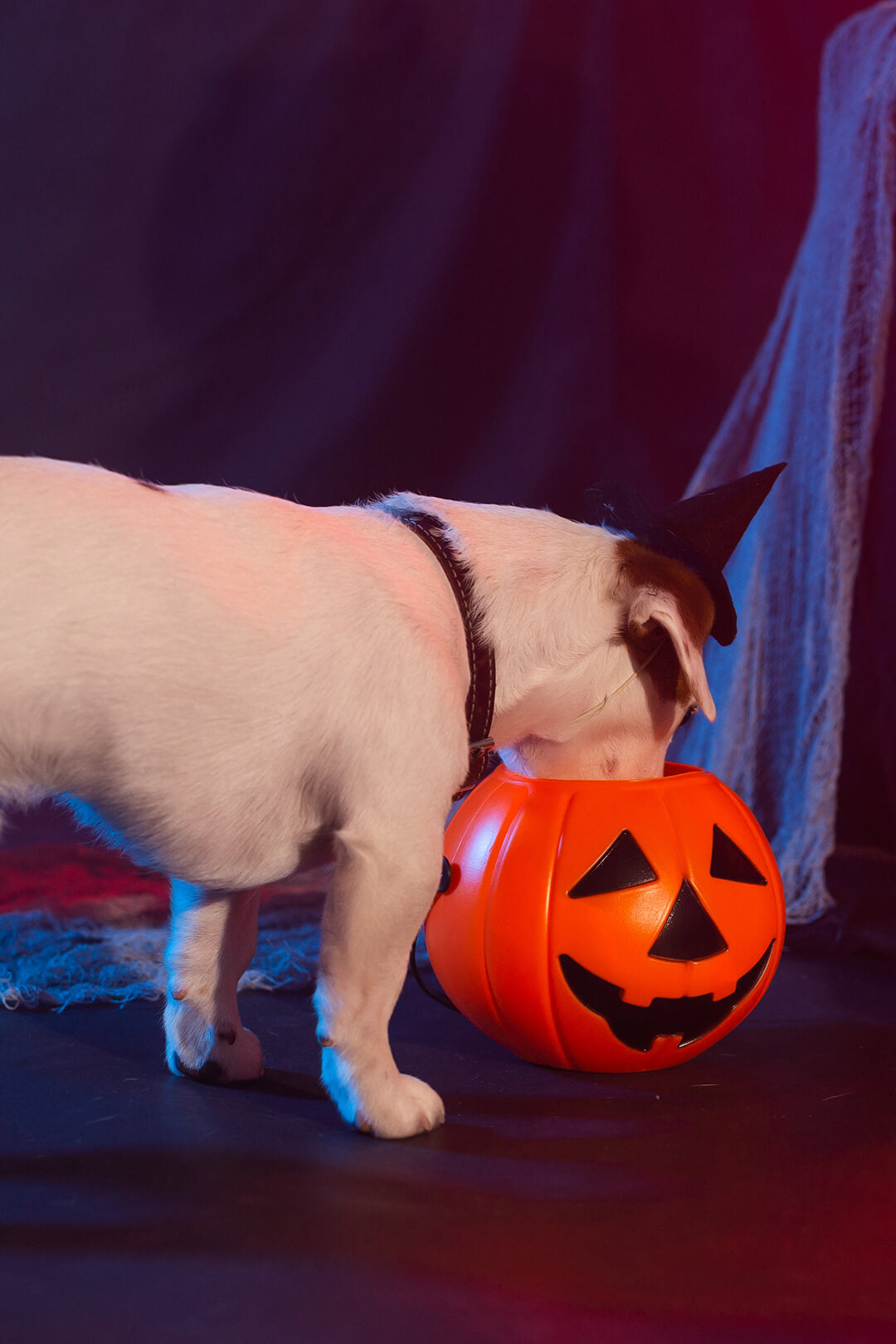As Halloween approaches, something all pet parents should consider the kind of treats their pets can and cannot have.
Unfortunately, your pet can’t dip their paw into the candy bowl as yummy candy poses a unique threat to pets. Of all types of candy, chocolate is the biggest concern, but others, including raisins/grapes and sugar-free candies containing xylitol, are also harmful to your pet.
Let's talk about chocolate.
As chocolate lovers know, not all chocolates are made the same. Milk chocolate contains less of the ingredients that are toxic to dogs and cats: caffeine and theobromine. Next comes semi-sweet chocolate, then baker’s chocolate with the most concentration of these ingredients. When it comes to dark chocolate, pet parents should be even more careful about what their dogs and cats could accidentally eat.
How much is too much?
As a frame of reference, the mini Halloween candy bars sold in stores can weigh anywhere from ¾ ounce to about 1 ½ ounce. But how much of that do we have to be concerned about?
If that whole bar were milk chocolate, you'd expect a mild reaction in a 10-pound dog
that ate just one bar. Semi-sweet chocolate has a higher concentration of caffeine and theobromine so that size bar would affect a five, ten, and 20-pound dog. Baker’s chocolate, the highest concentration of all, would cause a mild reaction in dogs weighing 80 pounds or less!
If your pet ate one, what would you expect to see?
They can start off mildly such as vomiting, diarrhea, and hyperactivity. They can be severe enough to cause tremors, seizures, rapid and irregular heartbeat, and, in very severe cases, death. If you're ever worried that your dog or cat got into chocolate, call your vet immediately.
Grapes and raisins can also cause toxicity in dogs, and there has been a potential association in cats as well. Raisins can damage the kidneys, with some animals even suffering from acute kidney failure. Many of the signs could be confused with chocolate toxicosis, such as vomiting, diarrhea, and not eating. Some are more specific to the kidneys: increased or decreased urination, increased drinking, and lethargy. The best way to take care of this is right away by taking your pet to the veterinarian.
Something that people don't always recognize is the danger of an artificial sweetener called Xylitol. It’s often used as a sugar substitute, and it's found in chewing gum, baking goods, sugar-free chocolate, and peanut butter. A pet household should be xylitol-free. It can take as little as one to three sticks of gum to kill a 20-pound dog! This dangerous substance, harmless in humans, can cause a rapid drop in blood sugar and subsequent liver failure in as little as one to two days.
Besides treats, pets can get into trouble playing with decorations or costumes by eating or chewing things they shouldn't. Look at your decorations closely to be sure that your pet hasn’t gotten into them. Also, remember to watch the door as you’re opening and closing it. New people can cause stress, and an open door can be an opportunity to bolt out to escape. Putting our friends into a quiet room and making sure that they have identification just in case is a good plan.
Let's keep our pets safe this Halloween season by making sure to keep treats out of reach!
Happy Halloween!


